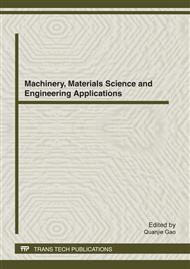p.136
p.141
p.147
p.154
p.160
p.165
p.170
p.176
p.182
The Effect of Lashing Wire Location on Mode Localization of Mistuned Bladed Disks
Abstract:
The finite element models of bladed disks with different lashing wire locations were established. The natural characteristics and mode shapes of bladed disks with different lashing wire locations were compared, and the effect of lashing wire location on the natural characteristics and mode localization of bladed disks were analyzed. These results show that different lashing wire locations could carry different natural frequencies to bladed disk, and there must be one lashing wire location with the highest frequencies. Lashing wire location has a significant influence on the mode localization of the mistuned bladed disks, and the mode localization of the bladed disks is less sensitive to mistuning when the lashing wire is in the middle of blades.
Info:
Periodical:
Pages:
160-164
Citation:
Online since:
April 2012
Authors:
Price:
Сopyright:
© 2012 Trans Tech Publications Ltd. All Rights Reserved
Share:
Citation:


